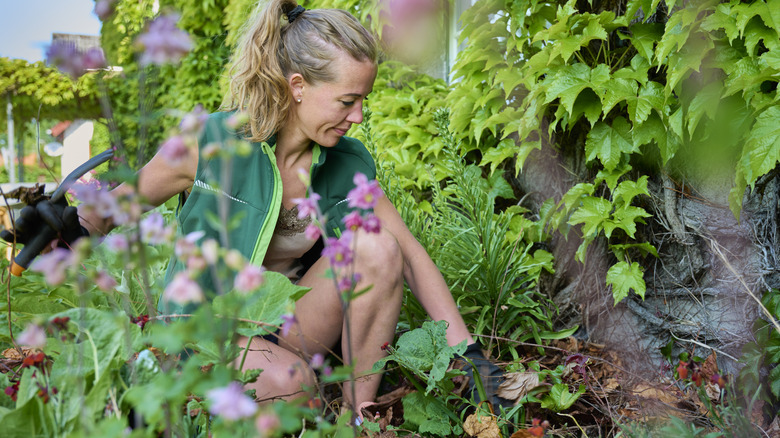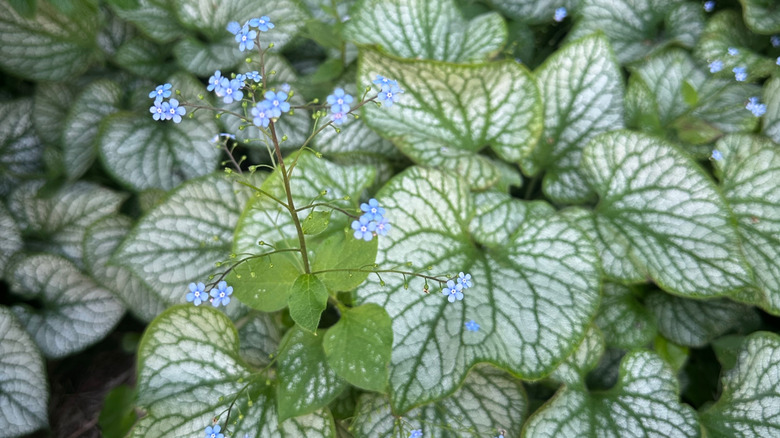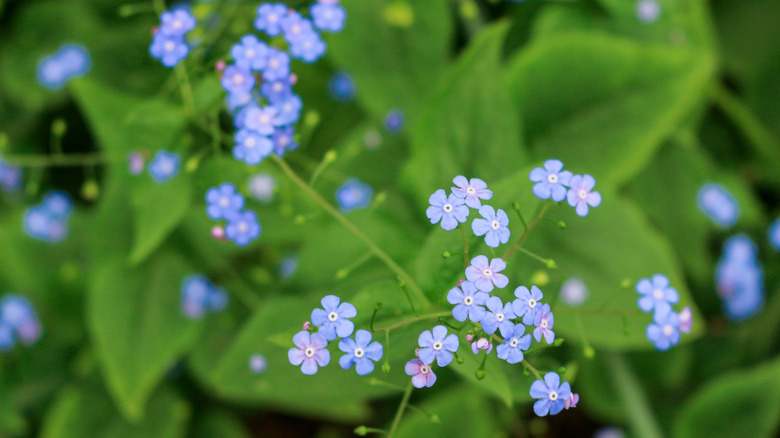The Shade-Loving Ground Cover Plant That'll Help Keep Weeds Away All On Its Own
Tired of battling stubborn weeds in those shadowy corners of your garden? Imagine a plant that not only thrives where others struggle but also acts as a living carpet, suppressing unwelcome weeds without lifting a finger. Meet Brunnera macrophylla, also known as Siberian bugloss, a true unsung hero for anyone looking for a low-maintenance solution for shaded areas.
This perennial offers a blend of striking foliage and delicate blooms, making it an excellent choice for adding visual texture while reducing weeding chores. It forms a dense canopy over the soil that shades out weed seeds, preventing them from germinating and taking hold. Beyond its weed-fighting powers, Siberian bugloss adds beauty to shady garden spots while offering a hands-off approach to maintaining a tidy garden. Growing to about 1 to 2 feet tall and wide, it forms neat clumps that spread gradually, making it a long-term solution for shady areas. These beautiful plants are just another way to transform a shade garden with a colorful ground-covering flower that pollinators love.
The beauty and practicality of Siberian bugloss foliage
While Siberian bugloss does produce sprays of tiny, blue flowers in spring that are often compared to forget-me-nots, it's the foliage that steals the show and provides its weed-suppressing power. The large, heart-shaped leaves are the main attraction, offering a variety of patterns and colors depending on the cultivar. 'Jack Frost' is known for its silvery-white leaves with contrasting green veins that create a shimmering, almost frosted appearance that brightens up shady garden areas. Other varieties like 'Alexander's Great' have large, deep green leaves with prominent silvery-white veins, while 'Diane's Gold' has golden leaves that highlight the delicate blue blossoms. The texture of leaves on Siberian bugloss plants is somewhat rough or hairy to the touch, which is believed to contribute to their natural resistance to deer and rabbits.
The large leaves are what make this plant such an effective ground cover. As the plant matures, the leaves spread out, forming a tight, continuous mat that shades the ground against weeds. This natural barrier is very effective, significantly reducing the need for manual weeding. The delicate blue flowers make this just one type of shade plants that attract hummingbirds and pollinators to your yard. Even after the spring blooms fade, the foliage remains a consistent feature, providing year-round visual interest.
Your guide to Siberian bugloss care
It's relatively easy to grow Siberian bugloss by following a few tips for growing a flourishing shade garden. Siberian bugloss thrives in conditions that many other plants find challenging: partial to full shade and consistently moist, well-draining soil. While it appreciates consistent moisture, especially during dry spells, it doesn't tolerate soggy soil, which can lead to rot. Planting it beneath trees or on the north side of a building creates an ideal environment where it gets dappled sunlight or consistent shade throughout the day. This perennial is quite hardy, growing well across USDA Hardiness Zones 3 through 8, although it may struggle in areas that have especially hot and humid summers. Once established, Siberian bugloss is remarkably resilient and relatively pest-free. A yearly application of compost in spring can help enrich the soil and support growth.
Should the leaves appear worn or unattractive in summer, trim them off to promote fresh growth. While not considered invasive, Siberian bugloss can reseed freely in moist conditions. If you prefer to prevent the plant from self-seeding — which Siberian bugloss readily does — remove faded flowers, but avoid cutting the entire plant back in the fall. Its leaves provide winter protection, and you can simply clear away the old foliage in spring as new leaves start to grow. Dividing the plants every 6 to 10 years in early spring can help to rejuvenate them, and it's also a simple way to spread the plants throughout the shady areas of your garden.


